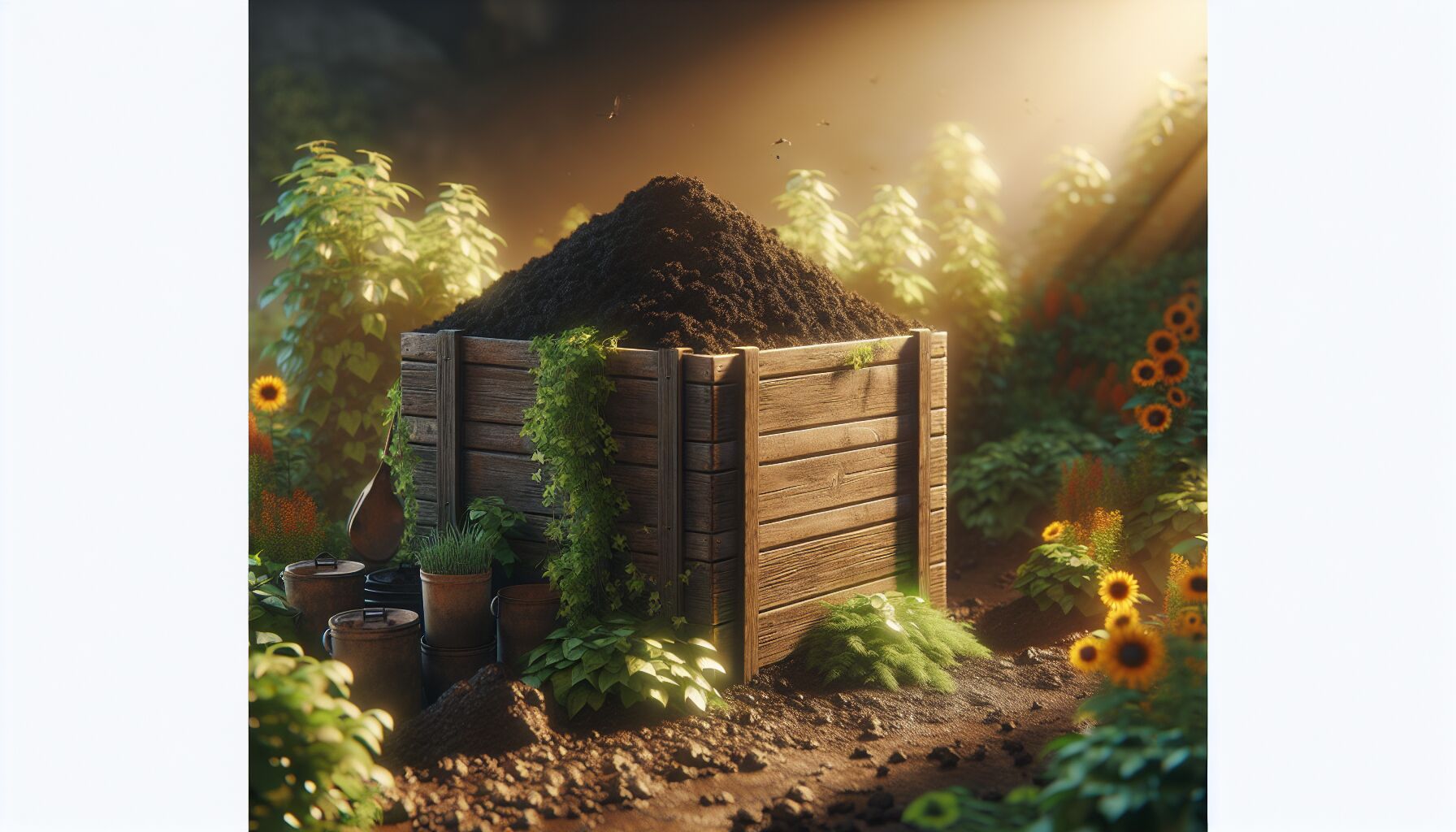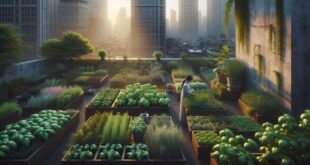 There’s an old saying: "Location, location, location." And when it comes to homesteading, that couldn’t be more true. Where you choose to set up your homestead will shape every decision that follows—from what crops you can grow to how easily you can access emergency medical care. Some dream of an off-grid transition in the deep woods, while others want a balance between rural solitude and occasional access to a nearby town. But before you get swept up in romanticized notions of wide-open fields and self-sufficiency, let’s break it down into what really matters.
There’s an old saying: "Location, location, location." And when it comes to homesteading, that couldn’t be more true. Where you choose to set up your homestead will shape every decision that follows—from what crops you can grow to how easily you can access emergency medical care. Some dream of an off-grid transition in the deep woods, while others want a balance between rural solitude and occasional access to a nearby town. But before you get swept up in romanticized notions of wide-open fields and self-sufficiency, let’s break it down into what really matters.
The Land Itself: Soil, Water, and Climate
You can’t build a sustainable lifestyle on land that doesn’t support life. That’s an easy truth, but it’s amazing how often people overlook it. The quality of your soil determines what food you can grow, whether your livestock will thrive, and if you’ll constantly be fighting nature just to get a harvest. A simple soil test—easily available from most agricultural extensions or companies like SoilKit—can tell you whether the ground is rich in nutrients or if you’ll be stuck trying to amend poor, sandy dirt for years.
And then there’s water. If you don’t have a reliable water source, you’re not homesteading—you’re surviving. Whether it’s a year-round creek, a deep well with abundant supply, or even collecting substantial rainfall, access to clean, plentiful water is non-negotiable. Don’t assume you can just drill a well later; some regions have unpredictable groundwater levels, and drilling can be prohibitively expensive.
Climate is another major piece of the puzzle. A charming, forested property in northern Maine might look postcard-perfect, but if you’re not prepared for brutal winters and a short growing season, you could be in for a rude awakening. Conversely, a desert landscape can be beautiful but might require intensive water conservation methods—think rainwater catchment systems, greywater reuse, or even hydroponics—to make it livable long-term.
Proximity to Essential Services: Balancing Self-Sufficiency With Practicality
Now, let’s talk about isolation versus accessibility. Some homesteaders thrive in remote areas where neighbors are miles away—just you, the trees, and the occasional deer. But what happens when you need a veterinarian for your livestock? Or a mechanic because your only vehicle just broke down? Even the most self-sufficient homesteader will need supplies, medical care, and community ties at some point.
Ask yourself:
– How far is the nearest town, and how often will I need to go there?
– What’s the local emergency response time? A sprained ankle might not seem urgent, but what about a serious infection or an accident involving farm equipment?
– Can you receive mail or deliveries? Many rural areas don’t have traditional postal services, which means regular deliveries might not be an option.
Self-reliance doesn’t have to mean total isolation. Many homesteaders pick a spot where they can get into town within 30–45 minutes but still enjoy peace and privacy.
Legal and Zoning Considerations: What You Can and Can’t Do
Here’s where reality meets red tape. Not all land is created equal when it comes to homesteading-friendly laws. Some states have strict zoning laws that dictate what you can build, whether you can keep livestock, and even if you’re allowed to live off-grid.
Before you fall in love with a piece of land, check:
– Zoning laws – Does the county allow homesteading activities like livestock, large gardens, or multiple structures? Some places prohibit off-grid living entirely.
– Water rights – In certain western states, just because there’s a stream running through your property doesn’t mean you can legally use the water.
– Building codes – Want to live in a tiny house or build a cob home? Some jurisdictions won’t be so accommodating.
A little research upfront can prevent massive headaches down the road. “A fool thinks himself to be wise, but a wise man knows himself to be a fool,” Shakespeare once wrote. When it comes to legal issues, assume you don’t know everything—look up your county regulations, contact the local planning department, and get informed before making the leap.
The Community Factor: Neighbors, Culture, and Local Attitudes
People often focus so much on land that they forget about the humans nearby. Like it or not, the existing culture and attitudes of your potential neighbors will affect your homesteading experience. Some rural areas welcome newcomers with open arms, while others can be wary of outsiders, especially if they bring big-city ideas that conflict with local traditions.
Take the time to visit the area several times before committing. Go to the local feed store, chat with folks at the farmers’ market, and see if the community aligns with your values. You don’t have to be best friends with your neighbors, but knowing you can count on them in tough times is invaluable.
And let’s not forget—local regulations can be influenced by community attitudes. If a county is full of long-time homesteaders, chances are local laws will be friendly toward things like rainwater collection, composting toilets, or backyard goats. In other places, even putting up a chicken coop might
Essential skills and tools for self-sufficiency
When you trade city life for homesteading, you’re signing up for a lifestyle where knowing how to fix, grow, and build things isn’t optional—it’s essential. The conveniences of urban living, where a mechanic is down the street and groceries arrive via an app, fade fast when you’re 30 miles from the nearest hardware store and your tractor won’t start. Self-sufficiency isn’t just about mindset; it’s about acquiring real, practical skills that keep your homestead running.
The Hands-On Know-How That’ll Save You Time—And Money
Let’s be real—you’re going to get your hands dirty. Whether it’s fixing a broken fence, diagnosing a sick chicken, or preserving a year’s worth of tomatoes, there’s always something demanding your attention. Some skills are non-negotiable if you want day-to-day life to run smoothly:
– Basic carpentry and repairs – You don’t need to be a master woodworker, but knowing how to build a sturdy chicken coop, repair a leaky roof, or fix a busted door latch will save you countless headaches—and dollars.
– Plumbing and electrical work – If you’re relying on a well, you’ll need to troubleshoot pumps and fix leaks. Off-grid energy setups like solar and wind require maintenance, and paying an electrician to come out every time something goes wrong isn’t always feasible.
– Gardening and food production – No matter how well-stocked your pantry is when you move in, eventually, you’ll need a sustainable food supply. Understanding soil health, composting, and seasonal planting will keep you fed and resilient.
– Animal husbandry – Whether it’s chickens for eggs, goats for milk, or a few sheep for fiber, raising livestock means learning about feeding, healthcare, and shelter needs. Some counties lack veterinarians who handle small farm animals, which means you’ll be the doctor in most cases.
– Mechanical skills – Tractors, chainsaws, and generators are homestead workhorses, but they’ll break, and usually at the worst time. Basic engine maintenance can be the difference between keeping your land operational or waiting two weeks for a repair.
Mark Twain once quipped, “The secret of getting ahead is getting started.” That’s the approach to take with self-sufficiency skills. You won’t learn everything overnight, but starting with the basics can make your transition smoother.
Tools of the Trade: What’s Worth Investing In?
Skimping on quality tools is one of the quickest ways to make homesteading harder than it needs to be. The right gear pays for itself in time saved and frustration avoided. Here are some essentials:
– A solid set of hand tools – Screwdrivers, hammers, wrenches, and saws are the backbone of DIY repairs. Pick durable brands like Craftsman or Milwaukee for longevity.
– Power tools for serious projects – A cordless drill, circular saw, and chainsaw will significantly speed up building and maintenance tasks. If you’re working off-grid, battery-powered options with backup solar charging are game-changers.
– Gardening must-haves – A broadfork, quality pruners, and a sturdy wheelbarrow will make growing food far easier. Consider investing in a greenhouse or high-tunnel setup to extend your growing season.
– Water storage and filtration – Rain barrels, solar-powered pumps, or Berkey filters are necessary for ensuring clean water, especially if local infrastructure is unreliable.
– Food preservation supplies – A pressure canner, dehydrator, and vacuum sealer will help you make the most of your harvests and avoid waste.
Tools aren’t just physical objects—they’re extensions of your skillset. Knowing how to use them effectively can mean the difference between an efficient homestead and endless frustration.
The Learning Curve: Expect Some Trial and Error
Here’s the thing—you’re going to mess up. Maybe you plant a whole row of tomatoes too early, only to lose them all in a late frost. Or you miscalculate how much firewood you need and find yourself scrambling mid-winter. Mistakes aren’t failures; they’re lessons.
One of the best ways to shorten the learning curve? Find mentors. Online resources like YouTube’s Living Traditions Homestead or books like Carla Emery’s Encyclopedia of Country Living are goldmines, but nothing beats hands-on experience. If there are local homesteaders or farmers nearby, ask if you can lend a hand in exchange for knowledge. Many have decades of experience and are happy to pass on their wisdom.
Sustainable living is about developing independence while staying connected to nature and community. A modern homesteader blends timeless skills with new technology to create a balanced, resilient lifestyle. The more you learn, the more confident and capable you’ll feel in your off-grid transition.
So, where do you begin? Pick a skill. Carpentry, gardening, animal care—whatever intrigues you most. Start small, build confidence, and before long, you’ll be handling homestead life like you’ve been doing it forever.
Building a sustainable lifestyle in a rural setting
 Sustainable living in a rural setting isn’t just about growing your own food or relying on solar panels—it’s a mindset, a series of choices that create a lifestyle where resources cycle efficiently, and nothing goes to waste. It sounds idealistic, but in reality, it’s practical necessity. When the nearest grocery store is an hour away, you begin to see that true sustainability isn’t a trend—it’s survival.
Sustainable living in a rural setting isn’t just about growing your own food or relying on solar panels—it’s a mindset, a series of choices that create a lifestyle where resources cycle efficiently, and nothing goes to waste. It sounds idealistic, but in reality, it’s practical necessity. When the nearest grocery store is an hour away, you begin to see that true sustainability isn’t a trend—it’s survival.
The Rhythm of Self-Sufficiency: Understanding Cycles
Everything on a homestead works in cycles. The seasons dictate when you plant and harvest. Livestock rotations determine when you hatch, butcher, or milk. Even water moves through its own cycle—collected from rain, stored efficiently, then filtered for multiple uses. Recognizing these interconnected rhythms makes rural homesteading not just feasible, but deeply fulfilling.
Take soil, for example. Healthy soil isn’t just dirt—it’s a living ecosystem. If you treat it as disposable, you’ll end up fighting diminishing yields year after year. But if you nurture it through composting, crop rotation, and cover crops, it’ll reward you with nutrient-dense food season after season.
Wendell Berry, a long-time advocate of agrarian living, once wrote, “The care of the Earth is our most ancient and most worthy responsibility.” That responsibility becomes very real when you see how much more food you can produce just by taking care of your land properly.
Energy: Making It Work Off-Grid
Many homesteaders aspire to an off-grid transition, but here’s the thing—even “off-grid” doesn’t mean independent of energy. It just means you produce your own. The key is balance. Placing a few solar panels on your roof might power your lights but won’t be enough if you’re running a freezer, well pump, or workshop tools.
If solar is your go-to source, battery storage is non-negotiable. A solid lithium battery bank can store power for cloudy days, while a backup generator can be the bridge when the sun isn’t cooperating. Wind turbines work too, but only in areas with consistent airflow—something that needs researching before installation. Hydropower is another option if your land has a steady stream with sufficient flow.
Beyond production, conservation is everything. Using energy-efficient appliances, cooking with a wood stove, and relying on passive heating and cooling can significantly cut your power needs. It’s about designing a system where the energy you produce matches what you actually use—without waste.
Water: More Precious Than Gold
If you didn’t appreciate water before, homesteading will change that fast. Suddenly, every drop becomes valuable—especially if you’re in an area with seasonal droughts.
The three most reliable ways to secure water on a homestead:
1. A deep well – A long-term investment but often the most reliable source.
2. Rainwater collection – Storage tanks, gutters, and filtration systems can harvest and purify rain for practical use.
3. Surface water usage – Ponds and streams sound ideal, but legal restrictions and contamination risks mean they require careful planning.
Beyond just accessing water, managing it wisely is critical. Instead of letting greywater (like from dishwashing or showering) go to waste, many homesteaders redirect it to irrigate plants. Simple systems like swales—shallow, water-holding trenches—help prevent runoff and ensure water sinks into the soil where it’s needed most instead of disappearing downhill.
Food Security: More Than Just a Garden
Vegetable gardens are a homesteading staple, but they’re only part of a broader food sustainability plan. Think beyond the obvious:
– Perennials like fruit trees, nut trees, and berry bushes provide food year after year with minimal effort.
– Livestock integration not only provides eggs, milk, and meat but also natural fertilizers for gardens. Even a few chickens can drastically reduce kitchen waste by turning scraps into protein.
– Food preservation is essential—because let’s be honest, zucchini doesn’t grow in January. Learning to can, dehydrate, or ferment ensures you’re still eating homemade tomato sauce long after summer ends.
– Seed saving means long-term resilience. A single healthy tomato plant can produce enough seeds for years to come—with the added benefit of being naturally adapted to your land’s conditions.
A well-planned rural homestead doesn’t just provide enough food to last through the year—it creates a surplus. And that surplus opens up another important aspect of sustainability: barter.
Bartering and Trading: The Rural Economy
Not everything can be homegrown or handcrafted, and that’s where bartering comes in. Exchanging homemade soap for fresh honey, trading eggs for firewood, or offering labor in exchange for a side of beef isn’t just practical—it builds community.
The best rural homesteaders don’t try to do everything alone. They create a kind of informal economy, where everyone benefits by trading their strengths. It’s a bit like being a specialist in an old-fashioned village—you might be known for raising excellent dairy goats, while your neighbor is the go-to person for welding and tool repair. Everyone brings something to the table.
Waste Not, Want Not
A sustainable rural lifestyle means thinking differently about waste. When a tree falls on your property
 DS Haven In Light Of Things
DS Haven In Light Of Things






